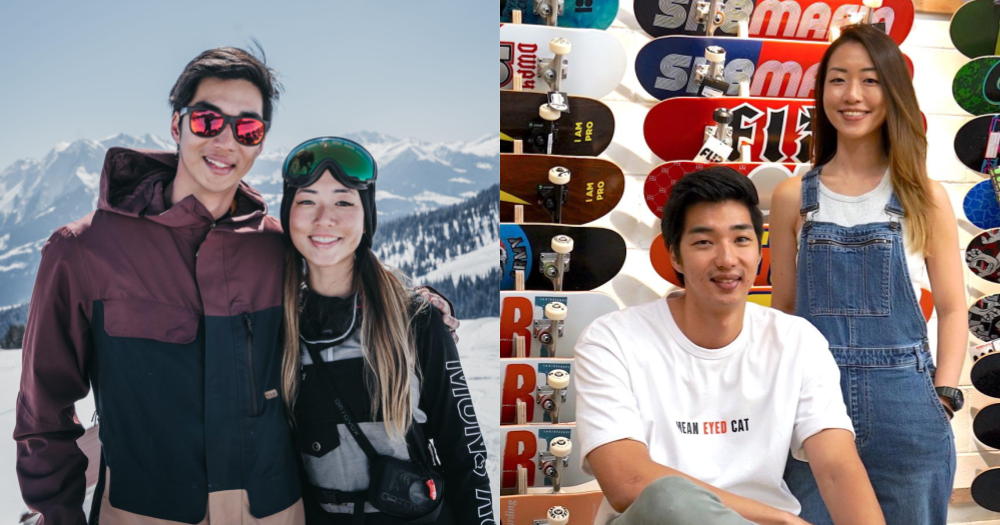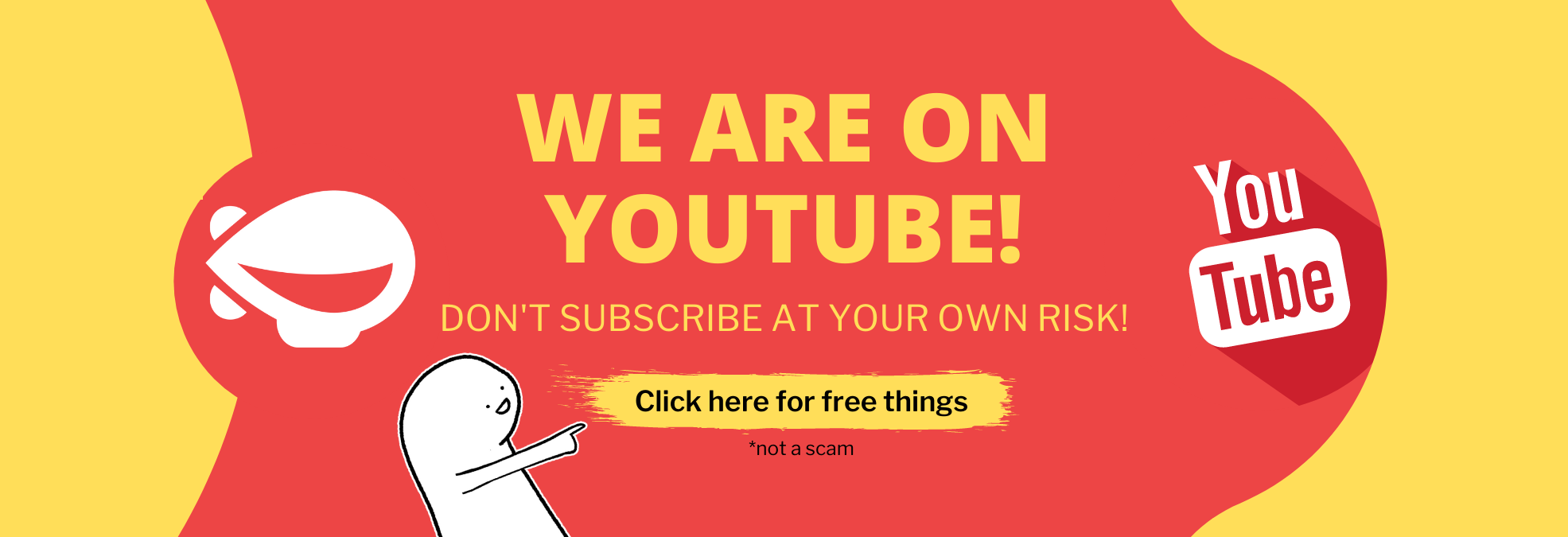Follow us on Telegram for the latest updates: https://t.me/mothershipsg
A key principle held by the founders of Singapore-based adventure sports company The Ride Side is that they are "not here to make big bucks".
Instead, it's about increasing access to the sports they love by introducing them to more people, and by growing and giving back to the community that has formed around their brand.
It is this focus on the sport itself that's helped them achieve the improbable — building up a snowboarding company that's brought over 2,000 guests on snowboarding trips, and even managing to retail thick snowboard jackets and other gear in sunny Singapore.
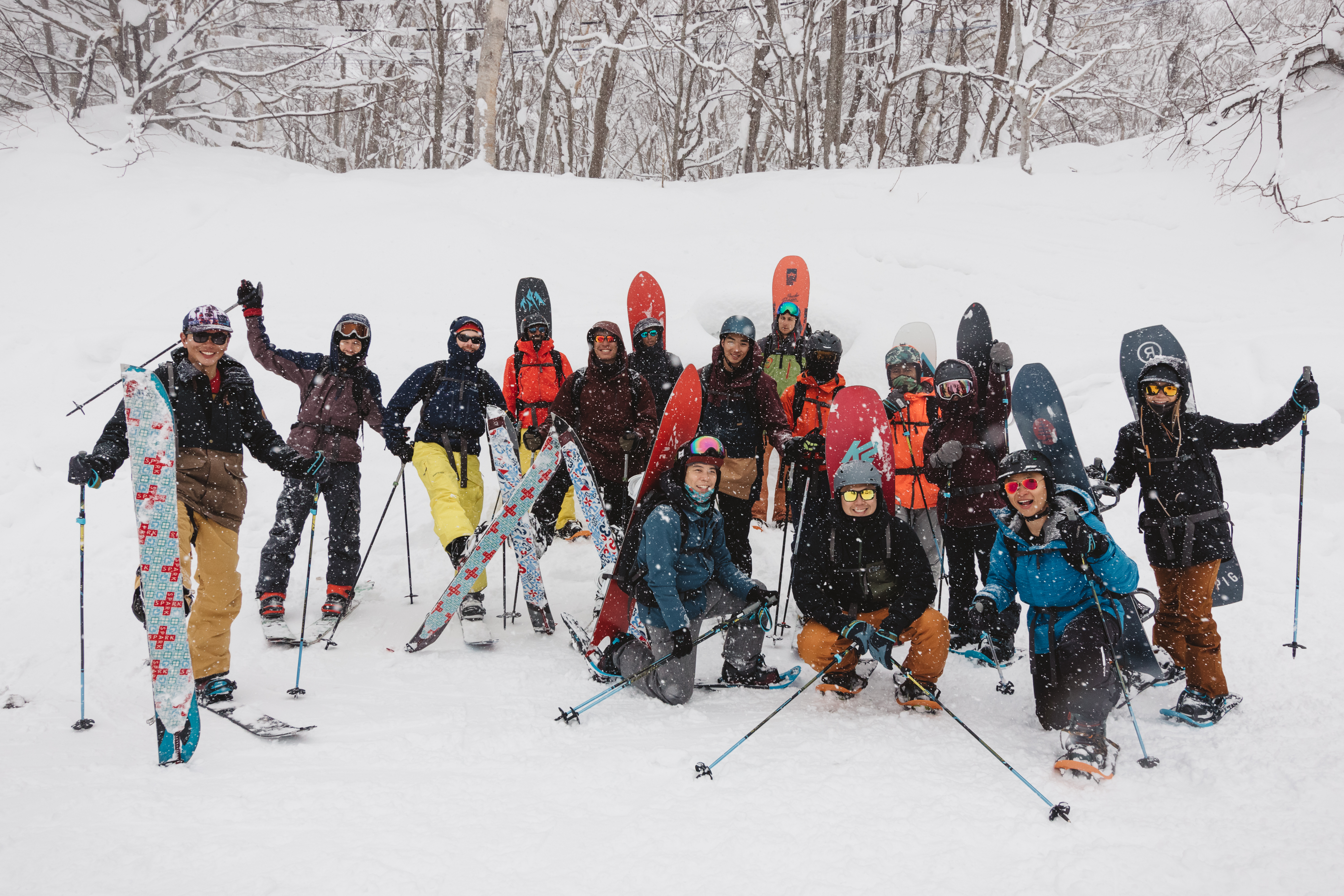 Participants on an Advanced Camp by The Ride Side in Japan. Photo courtesy of The Ride Side.
Participants on an Advanced Camp by The Ride Side in Japan. Photo courtesy of The Ride Side.
Not an intuitive business idea
In hindsight, it's easy to see that the model does make sense; their trips were kept relatively affordable, and planned with the specific needs of Singaporeans in mind.
One of the distinctions of a snowboarding trip with The Ride Side is simply the fact that local organisers and instructors would be a lot more accommodating of cultural quirks.
For example: Singaporeans' first reaction to seeing pristine ski slopes. Those from places where there are four seasons might not be as understanding of a group of Singaporeans needing to scamper through the fresh snow for a few minutes before settling down for a safety briefing.
And selling gear out of their retail space in Ubi meets the need of snowboarders in Singapore, who would otherwise have few options beyond taking a risk on online orders, or flying overseas just to ensure they get gear that fit right.
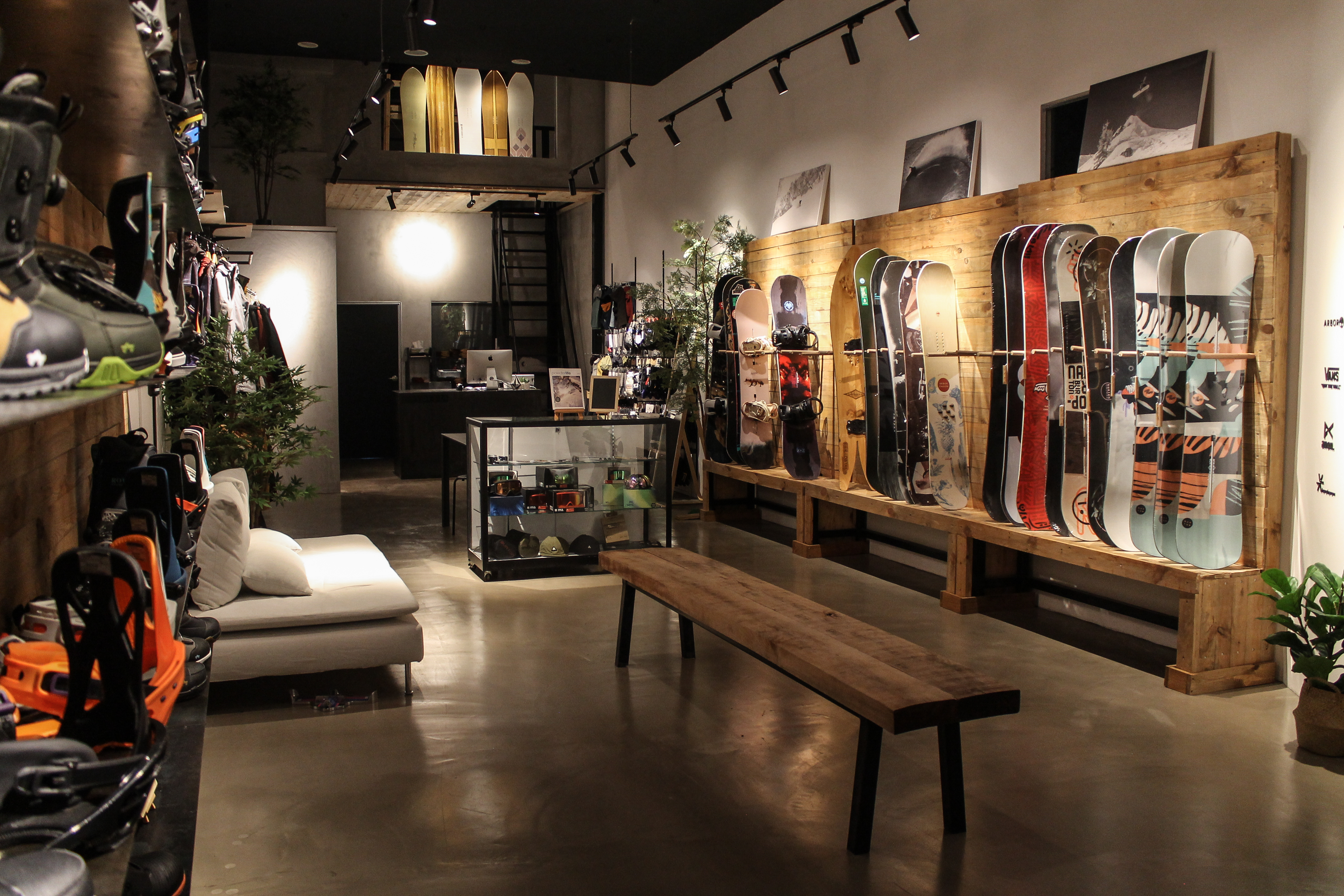 The Ride Side's studio in Ubi. Photo courtesy of The Ride Side.
The Ride Side's studio in Ubi. Photo courtesy of The Ride Side.
That being said, a Singapore-based snowboarding company is not the most intuitive business idea.
It's nonetheless one that has somehow worked out for founders Alex Hsu and Daphne Goh in the last five years or so, and even brought their company on a path to expansion — in the area of skateboarding — even amid Covid-19.
The business of fun
Hsu and Goh readily share that part of why they started The Ride Side was to support their own lifestyle.
They each fell in love with snowboarding — Hsu first, followed by Goh — and soon quit their corporate jobs to start The Ride Side after realising that there was demand for the snowboarding trips they were organising for friends and acquaintances.
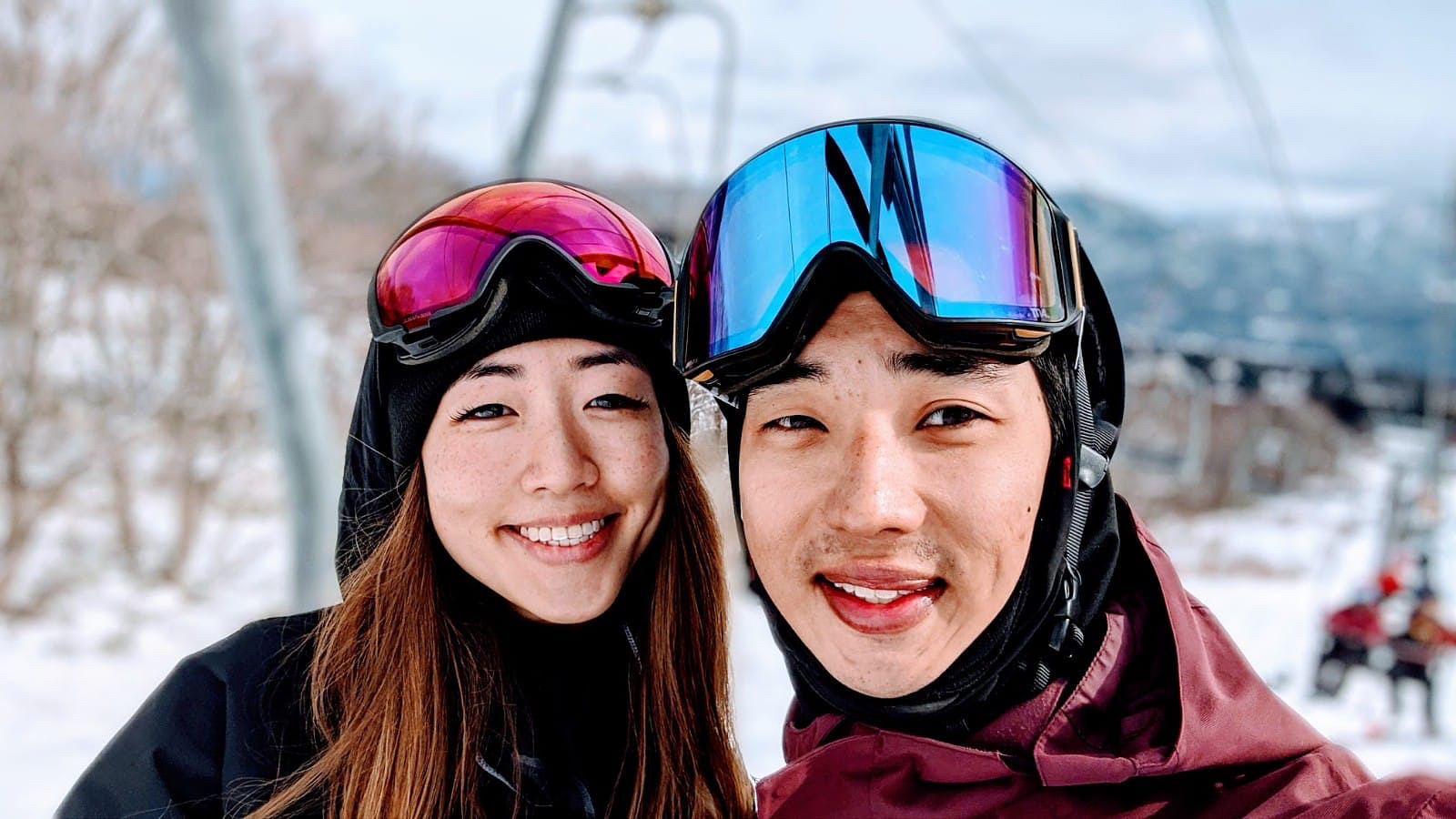 Goh and Hsu on a snowboarding trip in Myoko, Japan. Photo courtesy of Daphne Goh.
Goh and Hsu on a snowboarding trip in Myoko, Japan. Photo courtesy of Daphne Goh.
"It was very hard to even figure out how you get started. So we wanted to break that barrier," Goh shares.
This objective, of wanting to help people get started, and wanting to grow the sport, is something that's led them to repeatedly choose passion over profit. Goh says:
"What we have constantly reminded ourselves is this is about providing access to as many people as we can, so that they can come back time and time again to get better."
What is it about snowboarding that captivated Hsu and Goh to the point that they quit their corporate jobs and start The Ride Side?
According to Goh, it's "creative self-expression" — the fact that each individual can pull off movements and tricks while injecting their "personal flair" and style to the moves.
Before meeting Hsu and Goh, this would have been an entirely foreign concept to me, someone who has two left feet and very little natural athleticism.
As luck would have it, however, Goh had gently insisted that I try out surfskating before the interview.
"a sit down business interview seems abit too serious if thats the only thing!" she texted a few weeks back.
Why skateboarding?
There is a natural connection between snowboarding and The Ride Side's new retail ventures in Somerset and Kallang — snowboarding and skateboarding all come under the category of "board sports".
Surfskating, in particular, is in fact a common off-season activity for many snowboarders, as the specially-built skateboards (with a spring-loaded mechanism for the front wheels) require body movements also used in snowboarding.
I agreed to go with whatever Goh recommended, and ended up in back-to-back classes that covered the fundamentals of surfskating, as well as slightly more advanced skills.
On the board, I got a taste of two things that are brought up during the interview.
"Once we put our first foot into it, we knew that we wanted to do well"
I had a lot of fun with the classes I attended, and by the end of the session I could execute a few basic surfskating techniques, with some harder moves feeling like they were just out of reach for me.
The benefits of the activity were quite apparent — it'd be something that would get me to be more active, while allowing me to strengthen my (very weak) core muscles.
I left with a good feeling that this would not be my last time on a board.
This was very much along the lines of what Hsu says about the experience of moving into skating as a business in 2020: "Once we put our first foot into it, we knew that we wanted to do well."
After an initial trial at their space in Ubi, they launched Halfpipe, a hybrid skateboard shop, bar and cafe in Somerset.
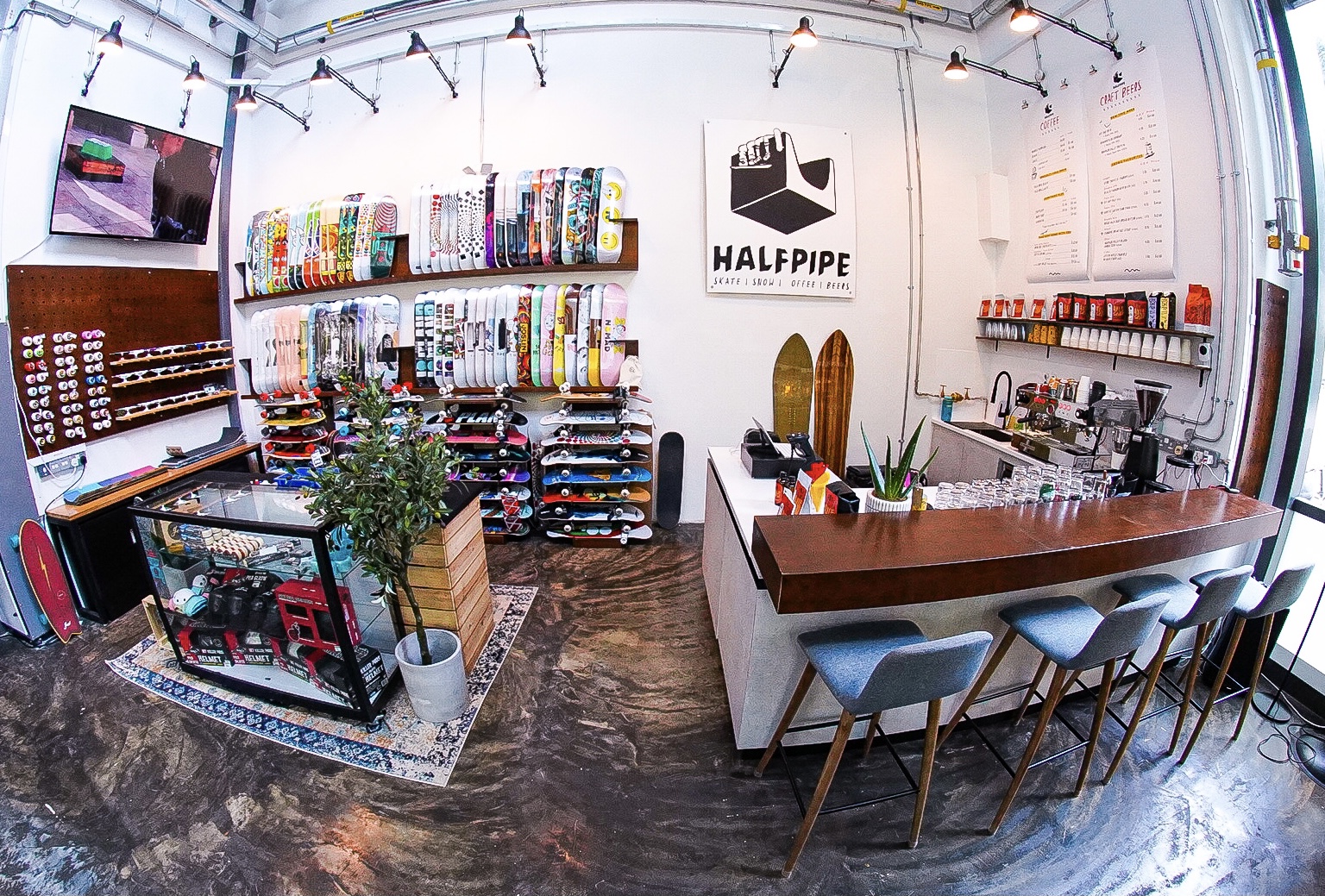 Halfpipe in Somerset. Photo courtesy of The Ride Side.
Halfpipe in Somerset. Photo courtesy of The Ride Side.
But, as Hsu says:
"We were not satisfied with what we could offer the community or Singapore in general... we knew we could do a lot better. We knew that there was potential in Singapore...
I think with everything that we do, it doesn't feel good if we try a little bit and then leave it as it is."
That led them to open the space in Kallang, about a year later.
The bigger space allowed them to bring in items that customers had been asking for, which they'd not been able to stock at Halfpipe, and allowed them to offer boards for test rides, something that wasn't feasible at Somerset due to space constraints.
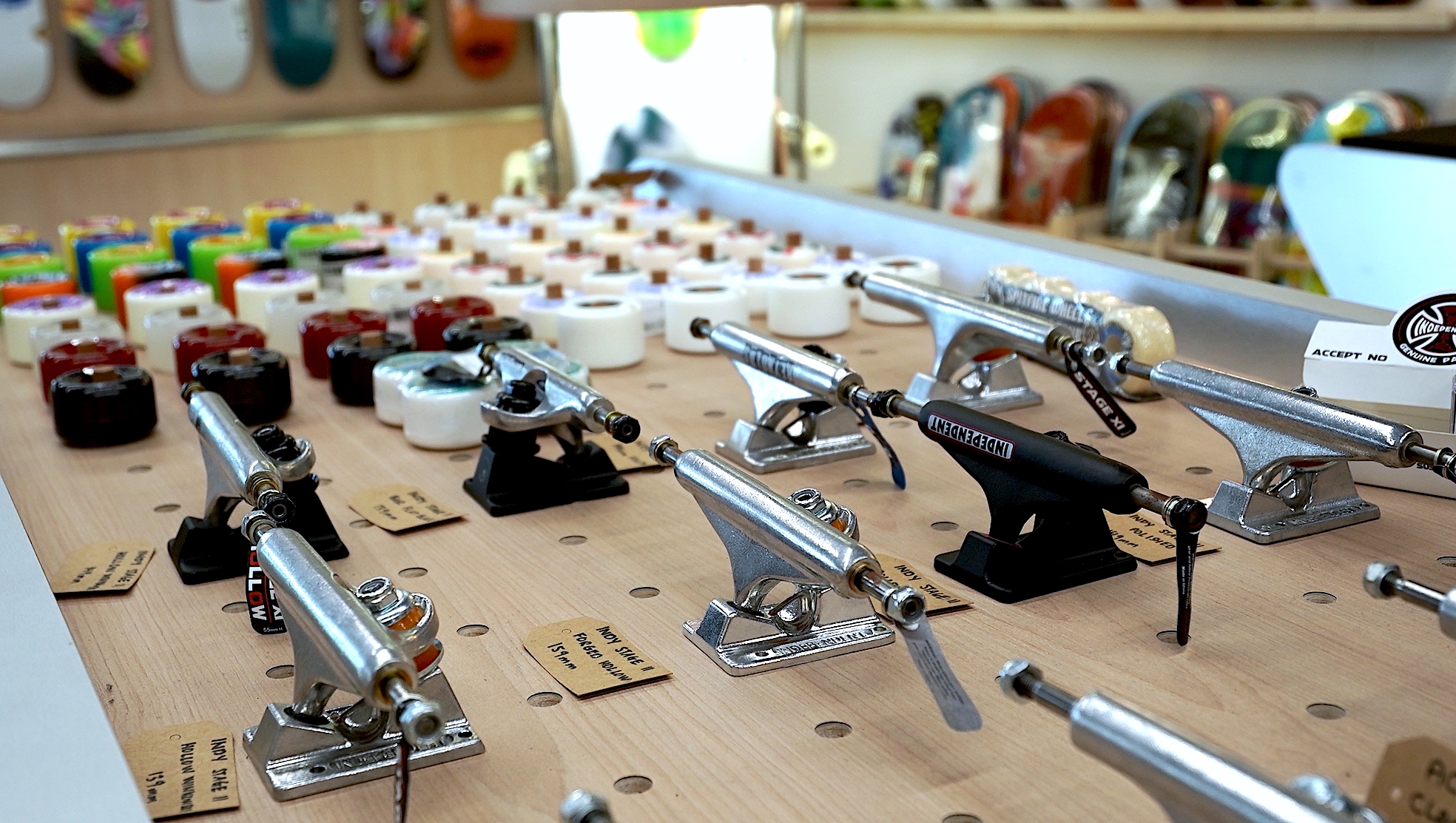 Skateboard components at The Ride Side in Kallang. Photo by Juan Ezwan.
Skateboard components at The Ride Side in Kallang. Photo by Juan Ezwan.
"In the last two years we saw The Ride Side go from a business that supported our lifestyle into a business that now supports the growth of the industry," says Goh.
Reflecting on the growth they are seeing, Goh adds:
"If you come every week, and you see the kind of people that come to our lessons or community sessions, the kind of joy that it brings... it breaks a lot of boundaries and barriers.
We have groups of people coming together, seemingly different groups that might not really interact on a daily basis, [and we're] providing that space to bond. I think that's what drives us to constantly do more things."
"If you lean back, you're on the ground"
The other thing I picked up from the surfskating lesson was this: You need to lean forward slightly, and put more weight on the front foot of your skateboard.
This was something my skateboarding instructor Isaac stressed repeatedly.
As I soon discovered, not leaning forward makes it that much more likely that I will lose control, sending my board shooting out from under my feet as I tumble backwards to the ground.
It gets better with some practice, though I'm still far from the point of it coming naturally to me.
Isaac explained that this is common among first-timers, and suggested that it likely comes from the very human instinct to want to protect ourselves and avoid danger.
For a beginner on a skateboard, that means leaning back.
But with skating, as Isaac said, we need to go forward, look up, see the obstacle and face it, so as to be able to take control of the situation.
Hsu and Goh are very amused when they hear this from me later on.
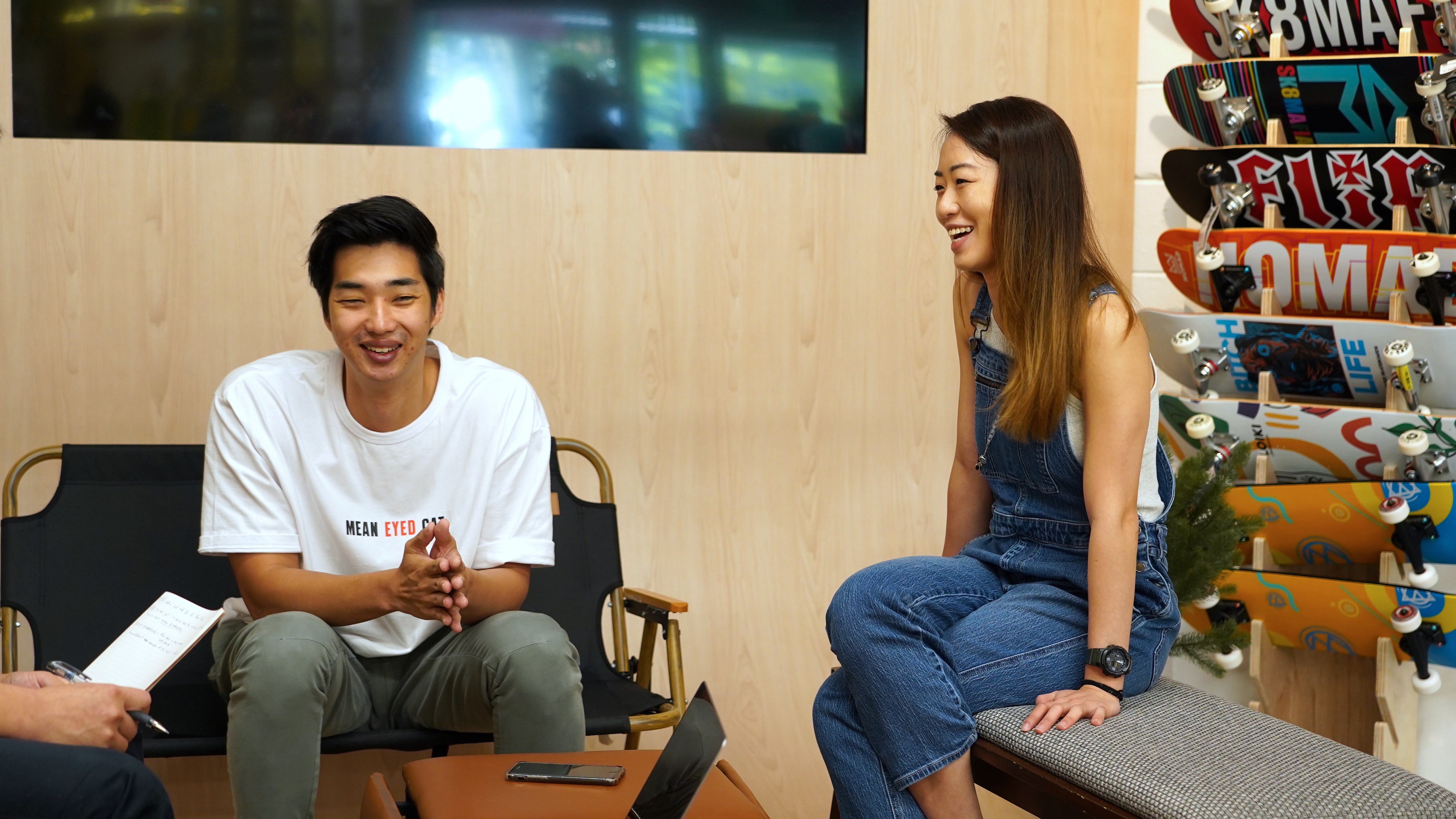 Photo by Juan Ezwan.
Photo by Juan Ezwan.
"That sounds like Isaac," says Goh, as Hsu starts to chuckle.
"When you're facing down a mountain, if you have to lean forward, it's really really scary. But once you realise you can commit, you can control everything," says Hsu.
I couldn't help but notice how that describes what Hsu and Goh have done with The Ride Side, too.
Is passion really enough to keep a business afloat?
The Ride Side's business ground to a halt in early 2020.
Snowboarding, which had been their main business all along, had to take a backseat, thanks to the fact that the usual destinations (Japan, New Zealand, Switzerland) were firmly out of reach.
The Ride Side's community rallied around them in different ways.
Some customers suggested that they sell masks, which helped bring in some revenue.
Another customer found out that the couple were refunding customers out of their own pockets after trips had to be cancelled (which Hsu calls "the right thing to do"), and offered free legal services to help them reclaim monies paid to hotels and other vendors.
The refunds eventually came in, and the masks sold well, but it soon became clear that Covid-19 — and border closures — would remain for some time.The "smarter" thing to do, as a two-person team, would be to lay low and minimise overheads till things get better. But Hsu and Goh had just committed to employing a small team of full-timers in Mar. 2020.
The only other option, it seemed, was to double down and start a new business instead, and thus, The Ride Side began moving into skateboarding in Aug. 2020.
"A real business with a lot of considerations"
As Goh puts it, the couple is "here to drive a bigger cause than just money".
To someone analysing these decisions from a distance, Hsu and Goh might come across as being too idealistic.
But the couple shares that as the business grows, the trade-offs between passion and profit become all the more real. Goh says:
"We are in the business of fun, [but] it is of course still a real business with a lot of considerations. Like, we've always had to weigh between, 'where do we go with this in terms of revenue and bottom line' versus 'what are the implications for the core values that we have'."
Is profit alone enough to keep a business alive?
Even with the benefit of hindsight, it's impossible to predict exactly where The Ride Side could have ended up if Hsu and Goh had run things with a more profit-oriented mindset.
But Goh is quite clear that the nature of the business would be very, very different.
"I don't think you would see us here. I don't think you would see us bringing in skateboards and everything," she said.
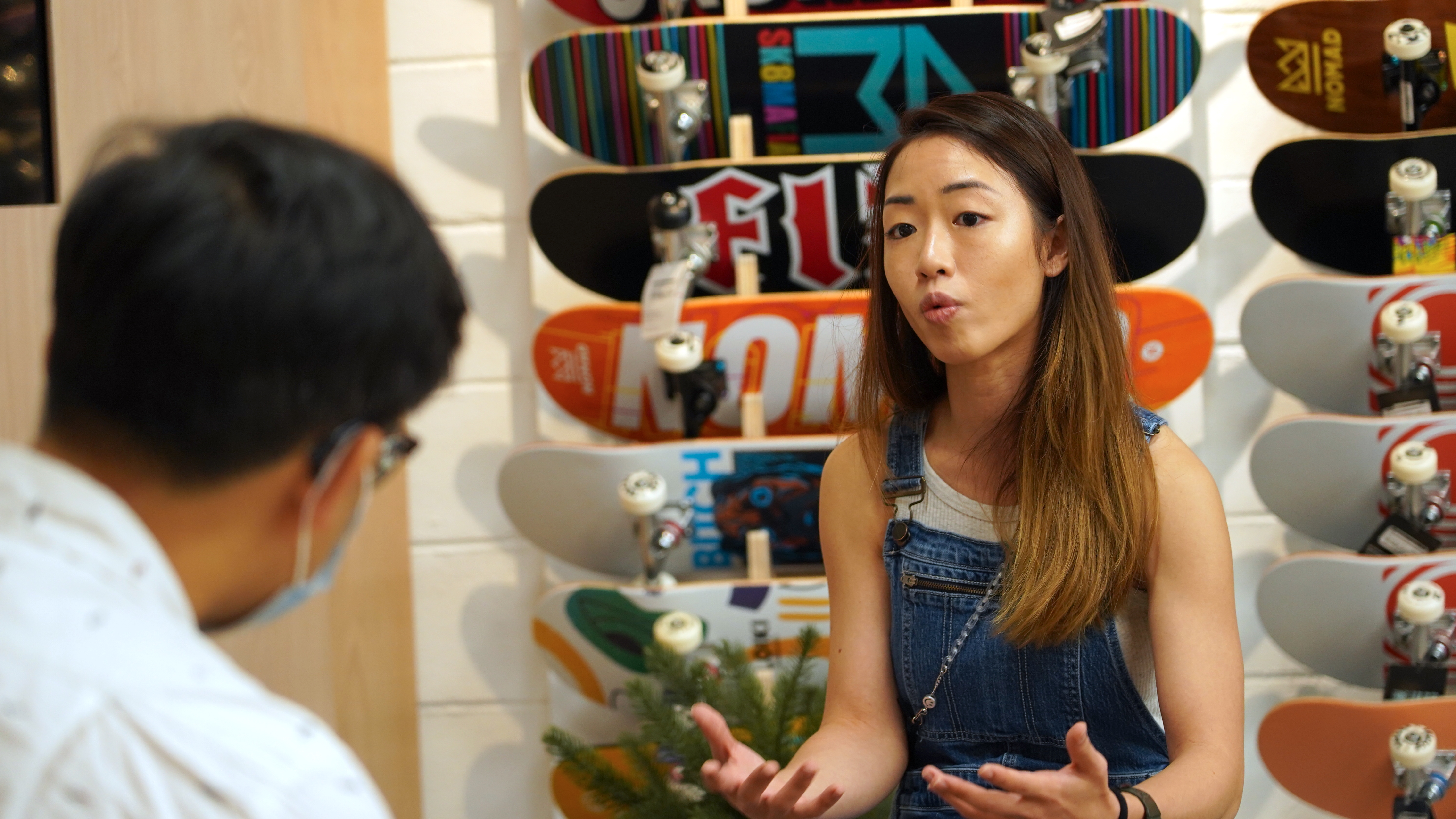 Photo by Juan Ezwan.
Photo by Juan Ezwan.
Instead, she says, they would have focused on growing their brand overseas and competing with established travel brands.
This would have transformed the experience for their customers, who might have found themselves paying quite a lot more than the S$2,000 or so that The Ride Side would charge for a fully-hosted snowboarding trip.
Some players in the market would price such trips anywhere between S$5,000 and S$10,000.
But a profit-oriented approach to the business would also have completely changed things for the founders themselves.
"Because that personal element would — overnight — be lost," says Goh.
As luck would have it, the personal element is still very much intact.
Hsu and Goh say snowboarding is still their "first love", one they're very much looking forward to reconnect with in March, when The Ride Side's first snowboarding trips since Covid-19 are scheduled to happen.
Turning away willing buyers
It appears that while The Ride Side started with the founders' love for their sport, that's no longer the only thing.
Hsu and Goh have come to feel a sense of responsibility to their team, and to the broader community around them.
It is — as with snowboarding and skateboarding — a delicate balance.
Weighing between these competing considerations doesn't always involve sombre pondering and soul-searching, however. It can also be something that crops up literally overnight.
One morning in early 2021, unexpected crowds thronged The Ride Side's retail outlet at Ubi and eventually cleared out its entire supply of newly-restocked surfskates.
Its online shop also crashed several times due to overwhelming traffic.
As Hsu and Goh recount the episode, they still seem slightly incredulous about the whole thing.
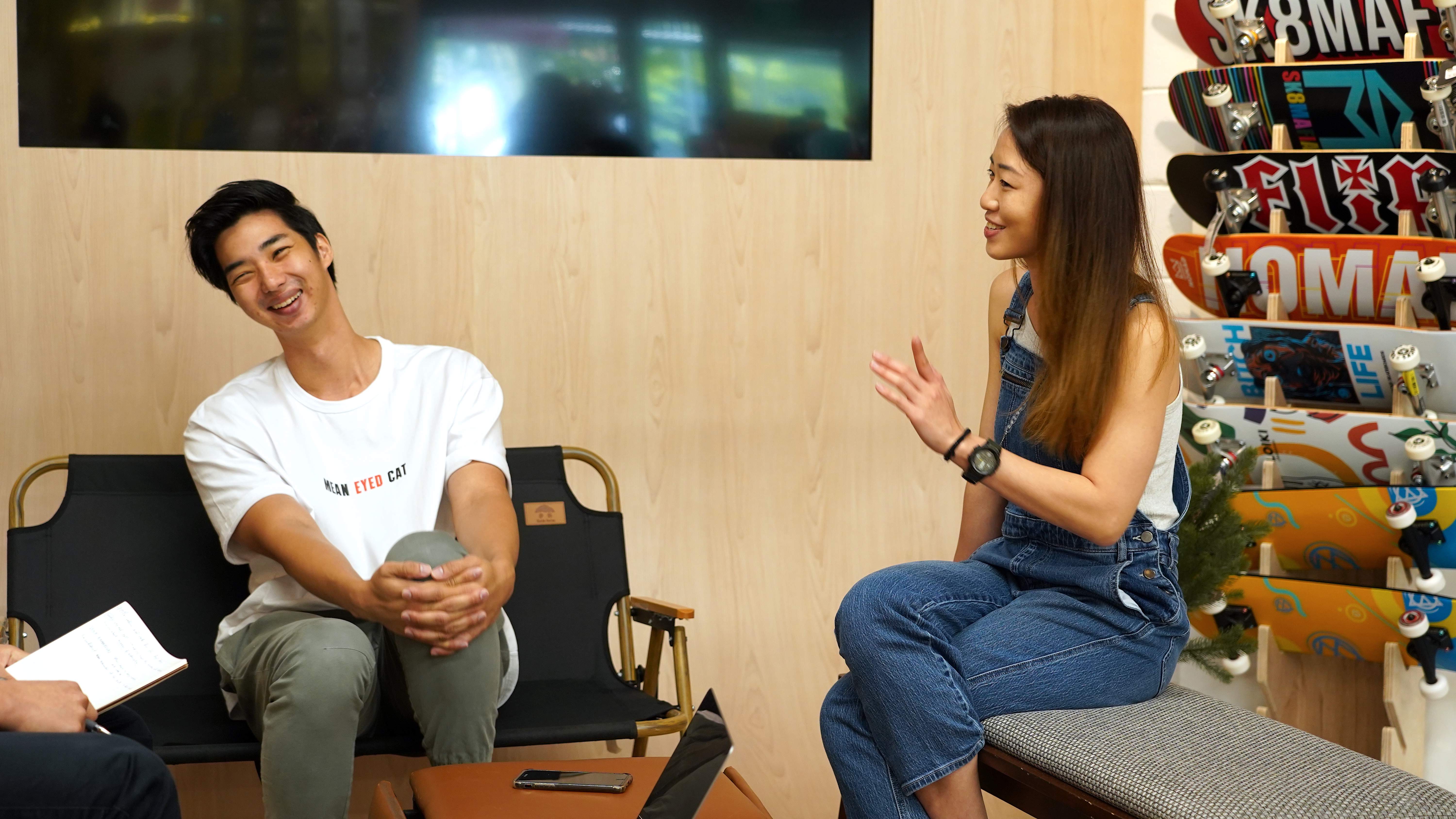
Goh recalls: "For the first time ever, we had a queue outside our shop, and it was a snaking queue. Our shop opens at 1pm, [but] at 9am, I got calls asking me, 'Where does the queue start?'"
Her stunned response: "What queue are you talking about? There's no queue."
"We have never had a queue. It was never that kind of business," she explains.
Goh remembers getting calls by customers asking for large numbers of skateboards, and asking, "you don't even know what a skateboard is, you don't even know what this is about, why are you buying 20 of it?"
Some of the would-be customers confessed that they were indeed not "genuine" buyers.
As it turns out, the demand for surfskates had boomed, thanks (but no thanks) to scalpers overseas, who were contacting people in Singapore for help to buy up whatever limited stock was available, so that it could be re-sold in other markets at a huge markup.
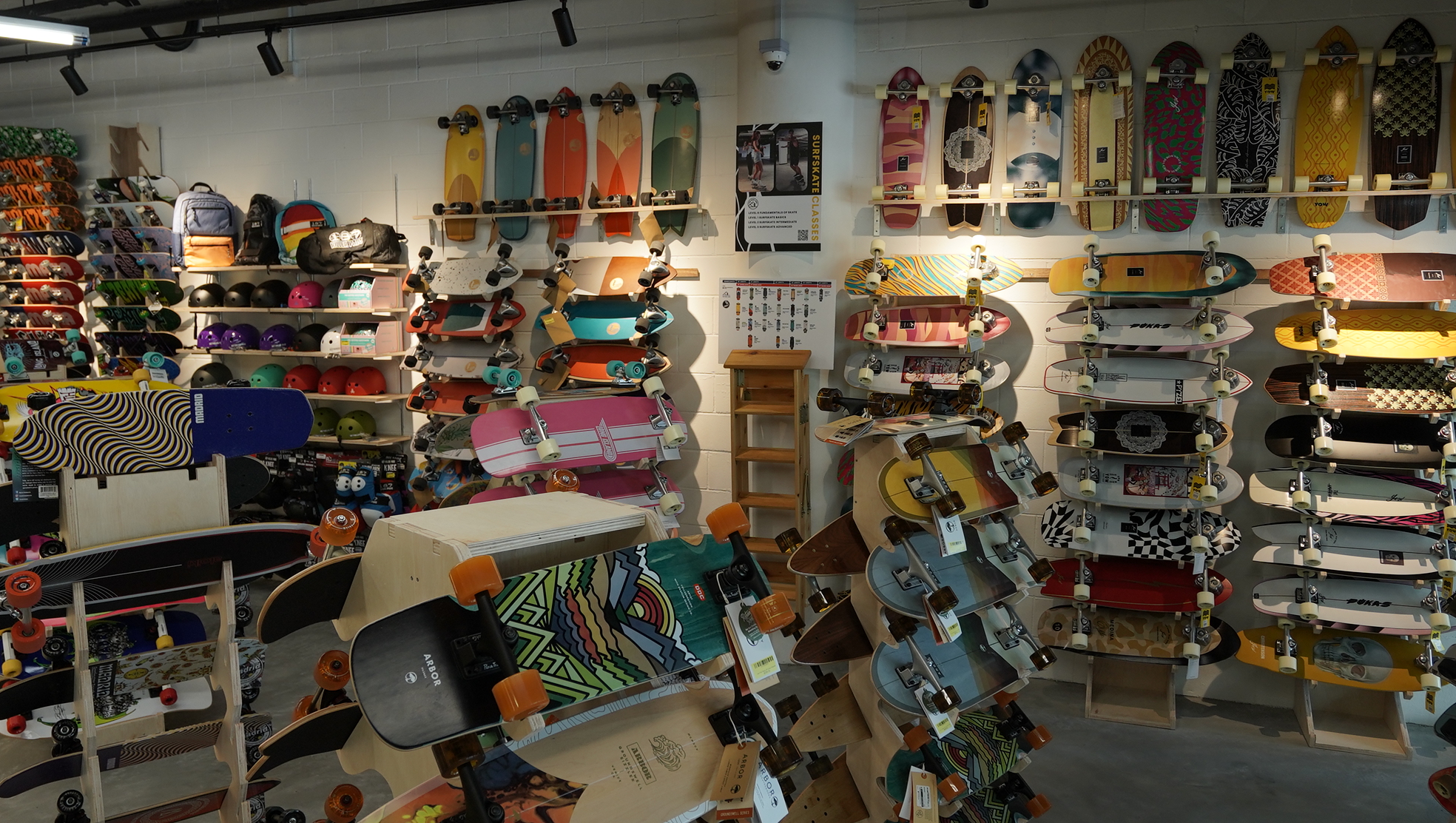 Skateboards at The Ride Side's retail outlet in Kallang Wave Mall. Photo by Juan Ezwan.
Skateboards at The Ride Side's retail outlet in Kallang Wave Mall. Photo by Juan Ezwan.
When logistics companies started calling to ask for boards in the hundreds, Hsu and Goh dug deeper and soon learned of a burgeoning black market where boards were sold between S$2,000 and S$3,000 — five to seven times of the retail price of S$400 at The Ride Side.
But their priorities were clear: To "make sure that there's enough for the local community here in Singapore," said Hsu.
Their firm stance was that local customers wanting a surfskate for their own use should not have to end up paying inflated black market rates.
The Ride Side thus rose to the challenge of deterring the scalpers, whose tactics evolved by the day.
Customers started to bring in children — and even grandparents — to skirt around The Ride Side's new rule that each customer could only buy one board.
Shop staff countered by inviting these families of 10 to please try out the boards before making a purchase, giving priority to those who ended up actually going on a test ride.
Goh gives credit to the retail team, who had to brace themselves to deal with the crowds, especially on weekends.
Hsu looks back on the episode as "a very interesting experience", one which taught them a lot and reinforced their commitment to their original objectives of increasing access and building community.
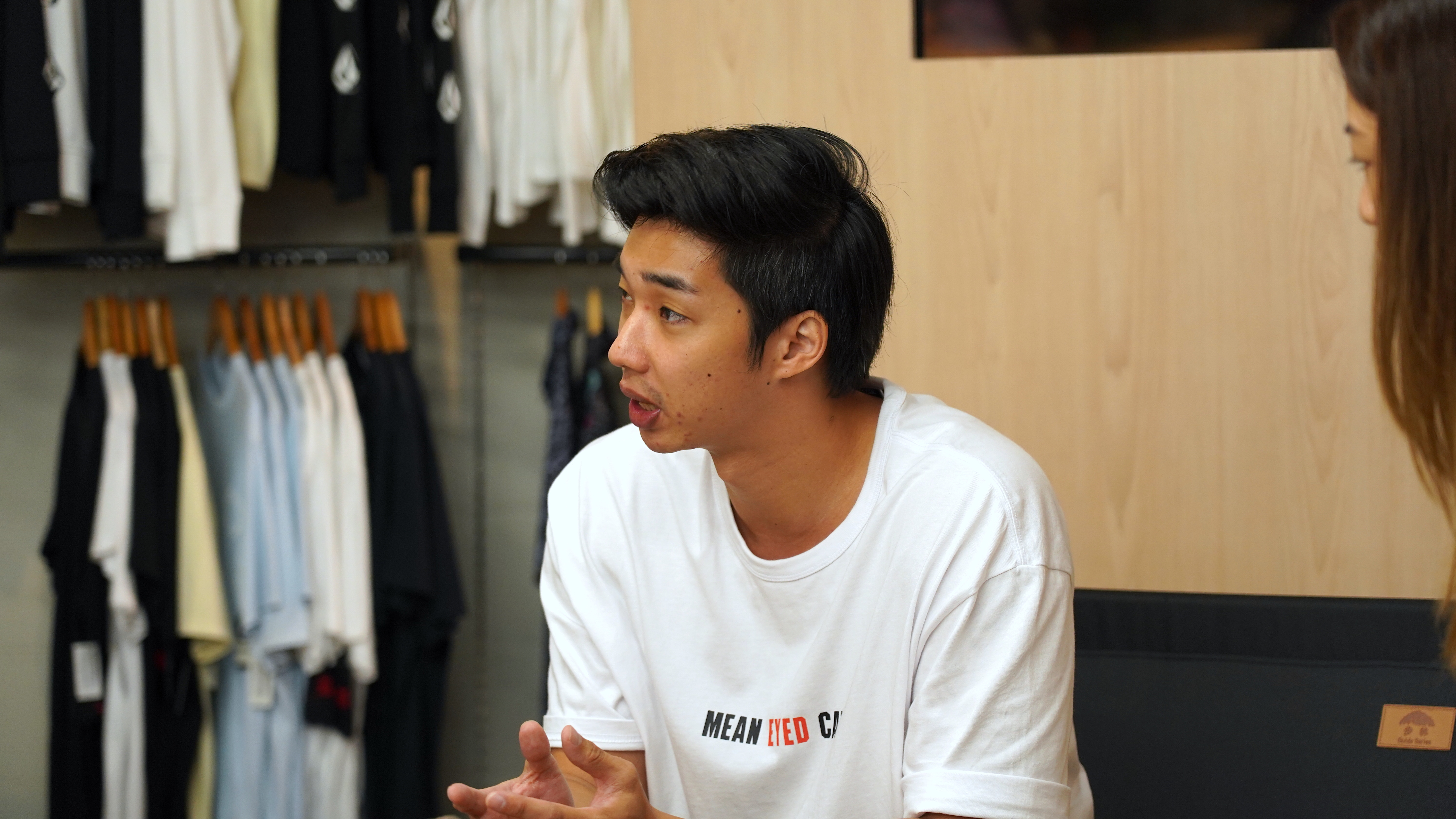 Photo by Juan Ezwan.
Photo by Juan Ezwan.
Chasing after profit, Goh says, is "a rabbit hole" that they've actively tried to avoid.
"Why did we even enter this space in the first place? I think we have to constantly be mindful of that," she says.
"We're not in here to make an enormous amount of money. It can go into that, but by doing that... we will lose a lot of the pillars and the elements that make The Ride Side what people have come to — I guess — love."
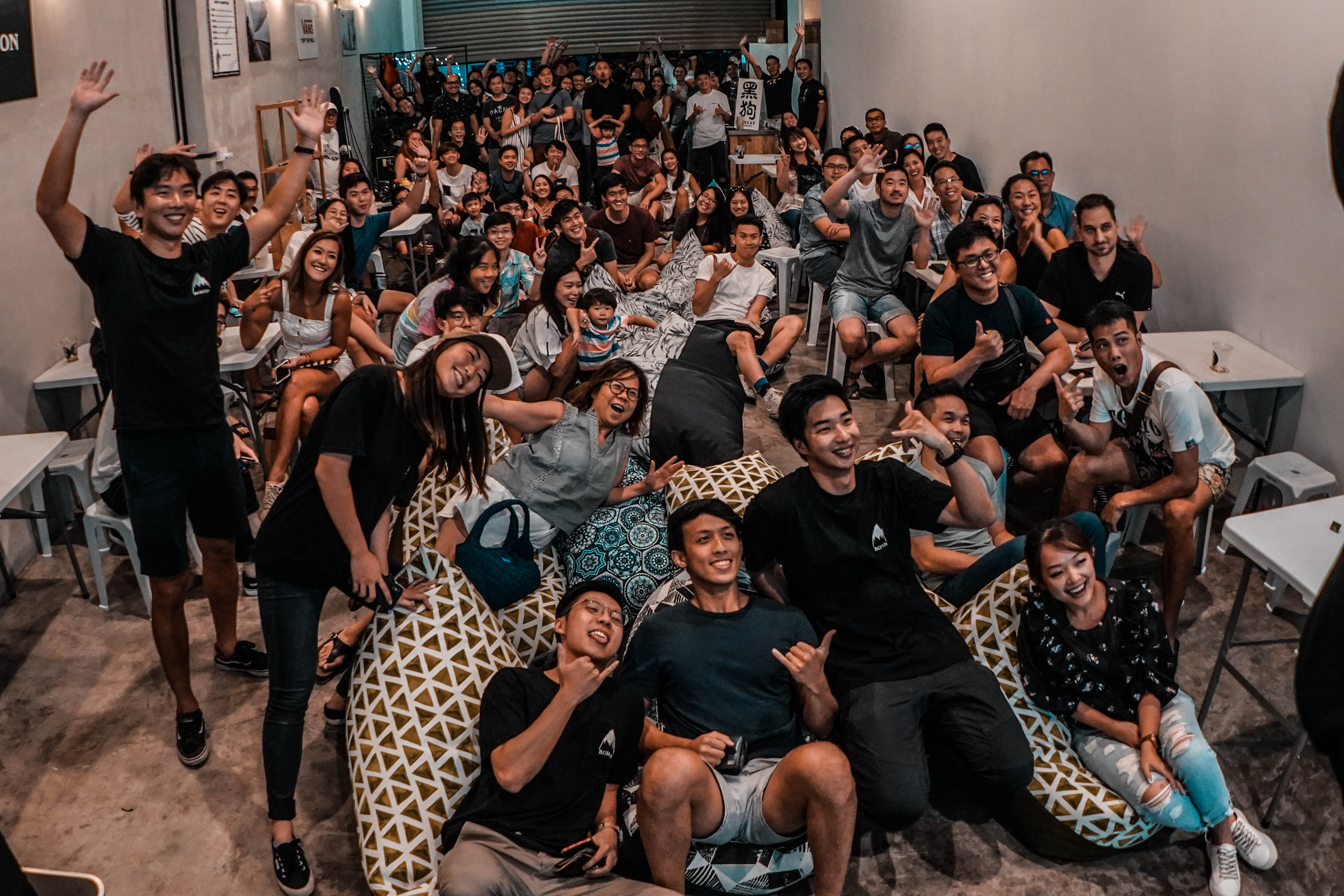 A crowd poses for a photo at one of The Ride Side's pre-Covid-19 events. Photo courtesy of The Ride Side.
A crowd poses for a photo at one of The Ride Side's pre-Covid-19 events. Photo courtesy of The Ride Side.
Top image courtesy of Daphne Goh and by Juan Ezwan
If you like what you read, follow us on Facebook, Instagram, Twitter and Telegram to get the latest updates.
